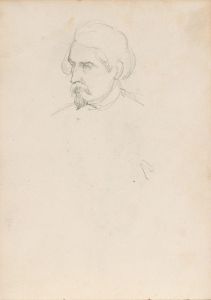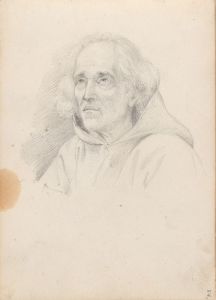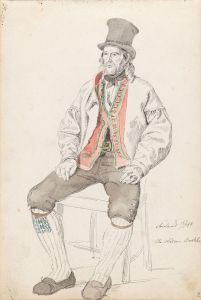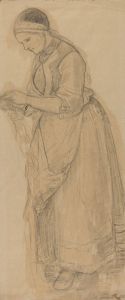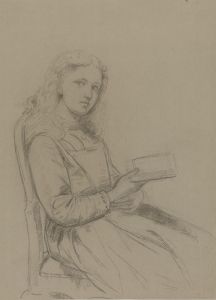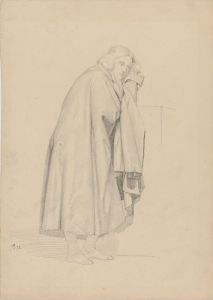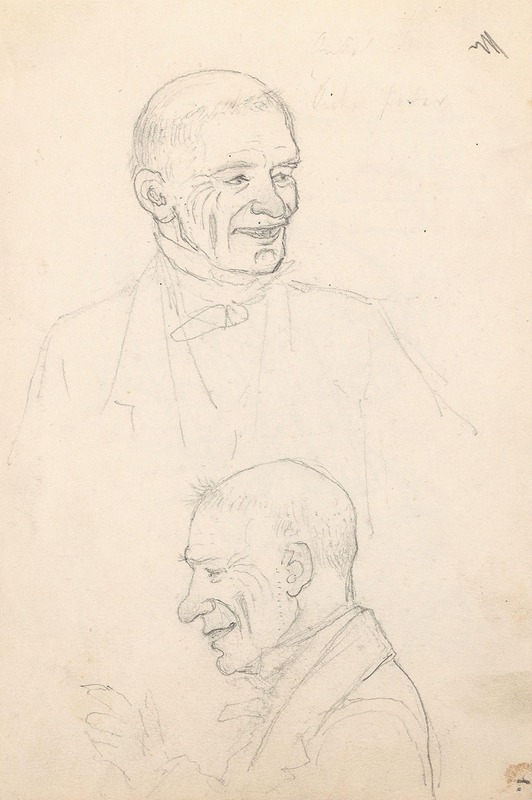
Portrait studies of a man
A hand-painted replica of Adolph Tidemand’s masterpiece Portrait studies of a man, meticulously crafted by professional artists to capture the true essence of the original. Each piece is created with museum-quality canvas and rare mineral pigments, carefully painted by experienced artists with delicate brushstrokes and rich, layered colors to perfectly recreate the texture of the original artwork. Unlike machine-printed reproductions, this hand-painted version brings the painting to life, infused with the artist’s emotions and skill in every stroke. Whether for personal collection or home decoration, it instantly elevates the artistic atmosphere of any space.
Adolph Tidemand was a prominent Norwegian painter in the 19th century, known for his detailed and culturally rich depictions of Norwegian life and people. His works often focused on the everyday lives of Norwegian peasants, capturing their customs, traditions, and environments with a keen eye for detail and authenticity. Tidemand's art played a significant role in the national romantic movement in Norway, which sought to celebrate and preserve the country's cultural heritage.
One of Tidemand's notable works is "Portrait Studies of a Man." This piece exemplifies his skill in portraiture, showcasing his ability to capture the essence and character of his subjects. While specific details about this particular painting are limited, it is consistent with Tidemand's broader oeuvre, which often involved meticulous studies of individuals, reflecting both their physical appearance and their social or cultural context.
Tidemand's approach to portraiture was influenced by his academic training and his exposure to various European art movements. He studied at the Academy of Fine Arts in Copenhagen and later at the prestigious Kunstakademie Düsseldorf, where he was part of the Düsseldorf school of painting. This movement emphasized detailed, realistic portrayals and often included historical or genre scenes. Tidemand's time in Düsseldorf significantly shaped his artistic style, encouraging a blend of realism and romanticism that became a hallmark of his work.
In "Portrait Studies of a Man," Tidemand likely employed his characteristic attention to detail and his ability to convey the personality and mood of his subject. His portraits are known for their lifelike quality and the subtle interplay of light and shadow, which add depth and dimension to the figures. Tidemand's use of color and composition would have been carefully considered to enhance the overall impact of the portrait.
While the specific subject of "Portrait Studies of a Man" is not detailed in available records, Tidemand's portraits often featured individuals from various walks of life, including peasants, clergy, and other notable figures of his time. His works are appreciated not only for their artistic merit but also for their ethnographic value, providing insights into the clothing, customs, and expressions of 19th-century Norwegians.
Tidemand's legacy is significant in the context of Norwegian art history. His works are housed in several important collections, including the National Gallery in Oslo, and continue to be studied and admired for their contribution to the understanding of Norwegian culture and identity during a period of national awakening. Through his portraits and genre scenes, Tidemand captured the spirit of a nation and its people, leaving a lasting impact on both art and cultural history.









